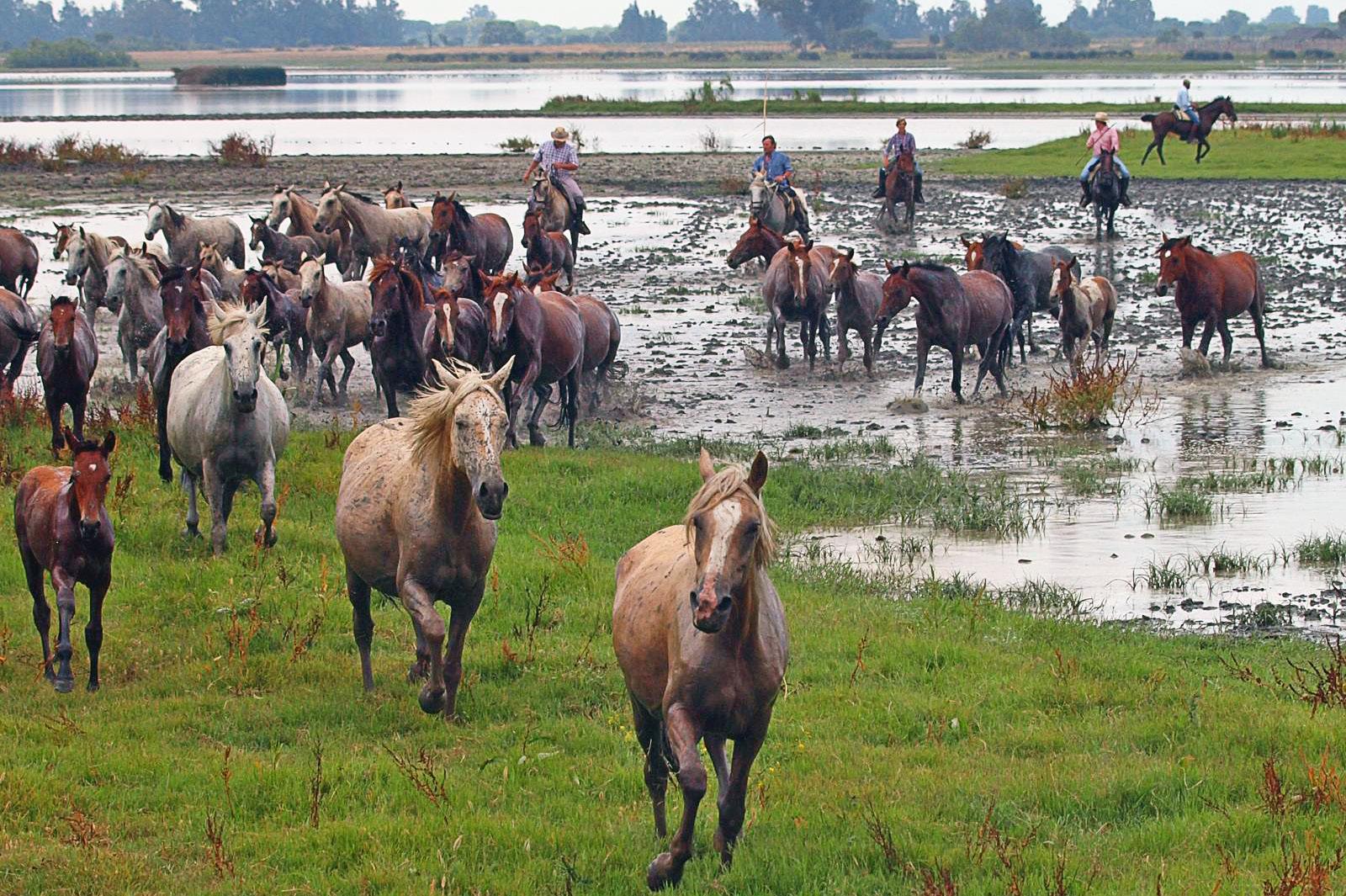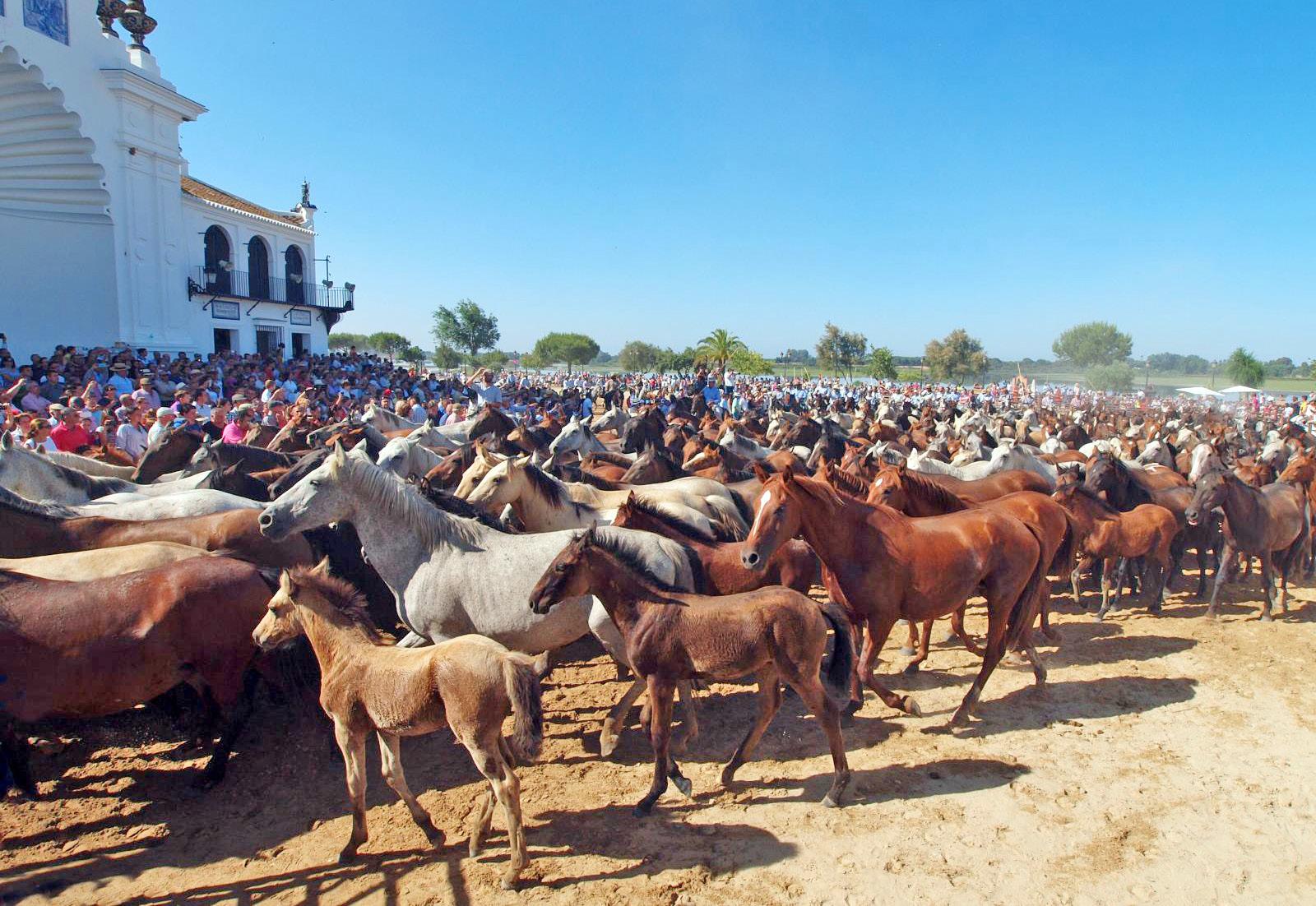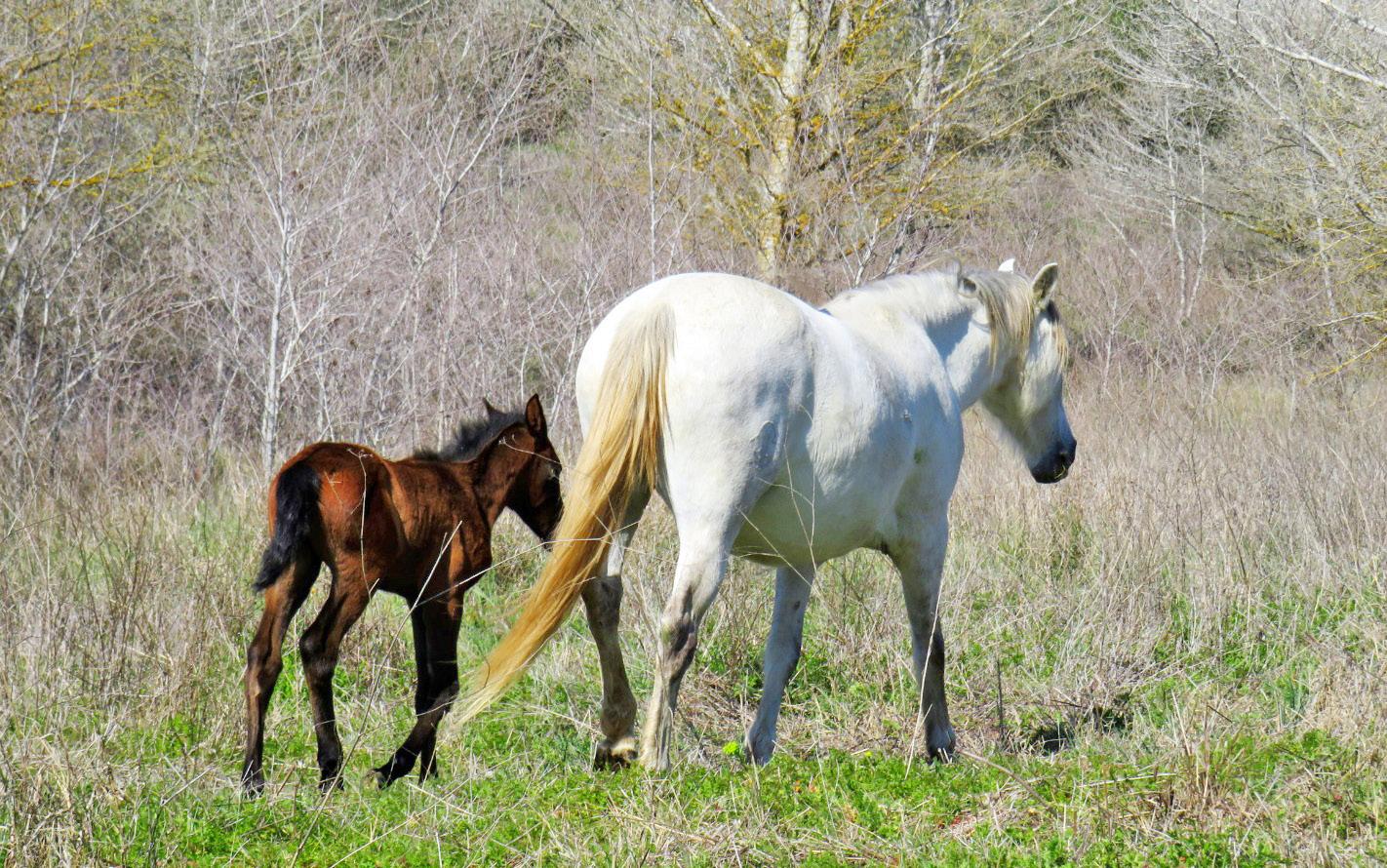
4 minute read
Breed: The Marismeño heritage
BREED
The Marismeño heritage
Although genetically diverse, the Marismeño have never lost the ability to survive in their demanding marsh environment, writes MATHILDE GREGOIRE.
The Marismeño is one of the oldest breeds in Europe. Native to the marshes of the Guadalquivir River delta in Andalusia, Spain, these semi-feral horses are the descendants of the primitive Iberian breeds that lived in the region thousands of years ago. When the Moors arrived in the 8th century, Marismeños were crossed with Barb horses from Northern Africa. The introduction of this bloodline produced many of the qualities seen in other Iberian breeds, including agility, resilience, and stamina.
For centuries, Marismeños were used in agriculture and cattle ranching. It’s believed that American mustangs are descendants of escaped, domestic horses – very likely to have been Marismeños – brought to the Americas by Spanish explorers in the 16th century. Although the mustang later became a symbol of freedom and strength, Spain’s Marismeños did not receive the same appreciation. It was not until 2003 that recognition of the breed grew, and the official studbook wasn’t established until 2012. With just over 1,200 horses now registered in the Spanish Official Catalogue of Livestock Breeds, the Marismeño is classified as an autochthonous breed in danger of extinction.
Today, these free-roaming horses continue to live in Doñana National Park in southwestern Spain, a protected nature reserve with an extraordinary ecosystem consisting of marshes, sand dunes and wetlands. The Marismeño’s presence plays an important role in the ecological equilibrium of the region, which hosts one of Europe’s most biodiverse habitats.
Characteristics and genetics
The Marismeño exhibits similarities to other closely related Iberian breeds, including the more famous Andalusian
and Lusitano, and the lesser known Retuerta and Sorraia. They stand at around 14 to 14.3hh with a huge variety of coat colourings, although solid colours, particularly gray and chestnut are more usual. Marismeños have a straight or subconvex nose, an arched neck, low tail, and a strong build with a broad chest. They have powerful hindquarters and their legs are fine but sturdy. Like other Baroque breeds, they exhibit high stepping gaits and an elegant extension of the limbs at the trot and canter. The breed is well-known for its intelligence, courage and adaptability, and excels at Doma Vaquera, traditional Spanish Working Equitation.
Before the breed was officially recognised, there had been decades of crossbreeding with Andalusians and Thoroughbreds in an attempt to increase the Marismeño’s height. But these non-native breeds did not do well in the marshes, and to regain the legendary Marismeño toughness, the cross-bred horses were crossed again with welladapted Marismeños. Subsequent genetic studies show that today, the breed has retained much of its unique ability to thrive in its tough environment.

In some respects, the Marismeño can be considered a more rustic and robust variety of the Andalusian horse. Their manes are less thick and striking, and their hooves are wider, making them better adapted to living in the marshes and wetlands. Marismeños have a great resistance to diseases and are able to survive in harsh conditions. During the hot, dry summers, herds usually travel long distances in search of food and water. It is thought that their hardiness and adaptability is due to natural selection rather than human intervention.
The Saca de Las Yeguas
Marismeño mares are traditionally handled by yegüerizos, local horsemen whose work and traditions are an important part of the region's cultural heritage. The province of Huelva hosts the annual Saca de las Yeguas, the Rounding of the Mares, a centuries-old tradition first mentioned officially in a document drawn up in 1504 after the Duke of Medina Sidonia decided to regulate the event.

Every year on the 26th of June, over a thousand horses are gathered from all corners of the Doñana National Park before being driven across marshes, and through the pine forests and small towns of rural Spain. The mares and their foals pass by the Hermitage in the town of El Rocio, where they are blessed by a priest before making their way to Almonte. Once at their destination the horses are corralled. The yegüerizos check on their condition and inspect the new foals that are to be registered in the studbook, before the mares have their manes and tails cut to prepare them for sale. A few days later, mares that haven’t sold are driven back to the marshes where they remain free of human contact until June the following year.
This historic event brings together thousands of local horsemen, farmers, and spectators, and maintaining the tradition is crucial in ensuring the preservation and continuity of the breed while also contributing to the local economy.

